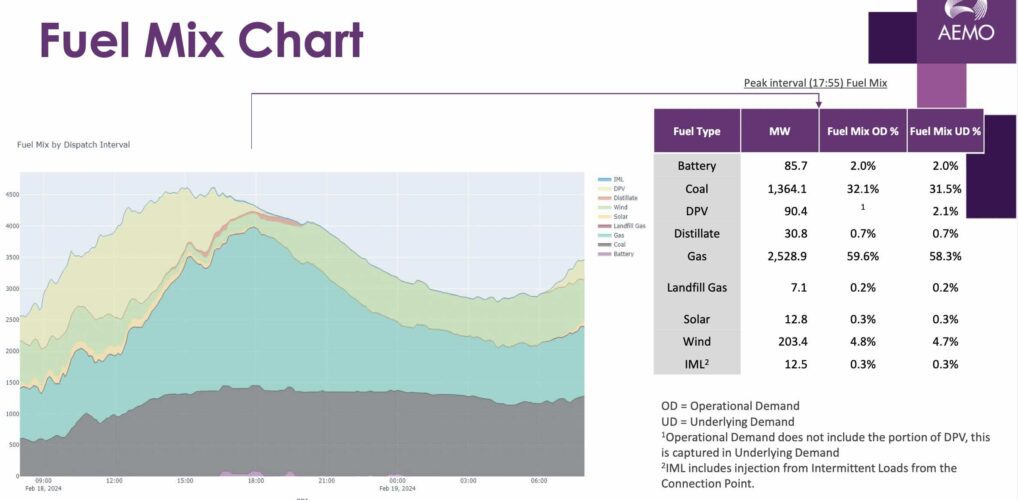South Australia attracts a lot of attention for its world-leading share of wind and solar, and its ambitious and mostly bipartisan energy transition plans.
But Western Australia is particularly fascinating because it is grappling with climate and energy changes while managing the world’s most isolated grid, which has no connection to other states or geographic areas.
How that transition is managed as the state adds up to 50 GW of new wind and solar, replaces its coal fired generators with storage, and manages ever falling minimum demand levels because of the growth of rooftop solar is going to be fascinating to see.
While spring is often the season for minimum demand levels on the grid, a new engineering challenge in itself, this summer has seen more challenges at the other end of the demand scale.
Over the last month, a record heatwave that has made parts of the state the hottest place on the planet at times, grid demand levels have been smashed. So much so that the top six operational demand peaks ever recorded in the state’s main grid all happened between January 31 and Feb 19 this year.

The Australian Energy Market Operator, whose job is to keep the lights on while managing the increasing pace of the transition from coal and gas to renewables and storage, has released some fascinating data about the events of the past month.
It’s interesting because since the transition of the state grid from 30 minute to 5-minute settlements, there has been little visibility of the day to day generation because of some technical issues. So the AEMO presentation provided some valuable insight.
The first thing to note is that six biggest demand peaks all occurred in that three week period as the state was buffeted by a string of heatwaves that pushed temperatures well above 40°C.
That put pressure on the grid as temperature remains above 35°C as the sun sets and the output of rooftop solar declines rapidly, forcing the grid to turn to other options to maintain supply to keep the air-conditioning on.
The role of rooftop solar is significant, because sandwiched in between the two record days of “operational demand”, which does not include rooftop solar, was the first ever peak above 5 GW of “underlying demand”, which includes rooftop solar.
The AEMO charts presented to a webinar last week indicate that rooftop solar was accounting for well over one gigawatt of that underlying demand. But, as the rooftop PV wound down its output in the late afternoon, underlying demand eased but operational demand rose, requiring peaking plants to swing into action.

What was interesting about the hottest day on the grid, Sunday, February 18, when operational demand hit a record 4..2 GW, was the role played by the state’s first bit battery at Kwinana – 100 MW, 200 MWh – whose output in that dispatch interval (87 MW) was three times that of diesel generators (35 MW).
That’s a new thing for the W.A grid, and it is expected to become a more dominant feature in coming years, as another four big batteries – the 200 MW, four hour Kwinana 2 extension, the 100 MW (two hour) Wagerup battery, Neoen’s 219 MW, four hour battery at Collie, and Synergy’s 500 MW, four hour battery, also in Collie – come on line.
All have been commissioned with the specific task of capturing excess rooftop solar in the middle of the day and storing it for the evening peak. The addition of the four new batteries will increase the potential battery output 10-fold in some dispatch intervals, and over a longer time frame.
That is important. Rooftop solar has certainly succeeded in reducing operational demand on the grid in the middle of the day, and pushing the operational demand peaks into the early evening. And demand management also contributed to a total of around 235 MW at various times, which is another important contribution.
But the events of the last few weeks underline that in a changing climate, and with ever intense heat waves, the W.A. grid will need more flexible assets to fill in those gaps, not less.










